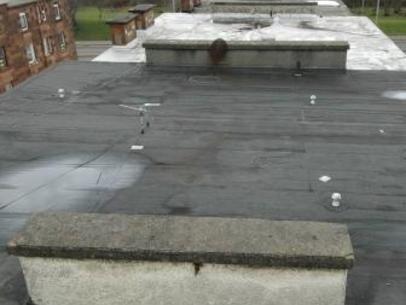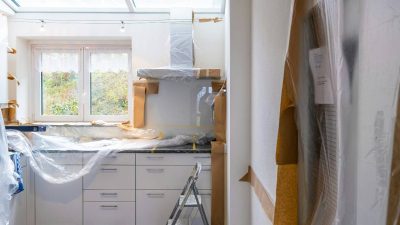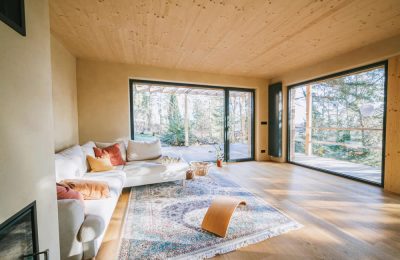Flat roofs can be found on all kinds of tenement buildings, both traditional and modern alike. Contrary to their name, they are generally not entirely flat, but laid with a gentle slope to allow rain to drain off them. Nevertheless, in a country which receives as much rain as Scotland, flat roofs can cause problems. In this article, we will examine the issues around flat roofs, their different characteristics, and how to repair the flat roof in your tenement building.
Materials
Firstly, flat roofs can be covered with different kinds of materials, each with their own pros and cons. The hardiness of your flat roof, and how often repair work is needed, will depend on the material it is made from.
Lead is the longest lasting of these materials, with a life span of around 100 years, so repairs are rarely necessary.
Some flat roofs are covered with other metals, or with asphalt or bitumen. Asphalt is hard-wearing and is often used on roofs where people walk. Bitumen-felt roofs, on the other hand, have a lifespan of only 10-20 years, and are normally covered in chippings.
In roofs with a lot of protrusions, such as pipes, vents and skylights, a liquid-applied roof may be in place. These have an average lifespan of 25 years, which can be extended simply by re-applying the appropriate resin.
‘Cold’ and ‘warm’ roofs
Another factor to consider is whether your roof is ‘cold’ or ‘warm’. Flat roofs are constructed with insulation, waterproofing and the coverings as above. So-called ‘cold’ roofs have their insulation underneath the waterproof covering, while ‘warm’ roofs have the insulation above the waterproof layer. In ‘cold’ roofs, there should be a vapour barrier above the insulation to allow moisture to escape, and the space between the vapour barrier and the roof covering should be ventilated. Because of this, cold roofs are more likely to suffer from condensation than warm ones, so keep this in mind when you are looking at condensation or dampness in your roof.
Problems with flat roofs
If they aren’t laid correctly, with a slight slope, rainwater can gather on flat roofs. This is called ponding. In the long-term, this can add weight to the roof, and water can leak inside if it reaches the edges of the protective covering.
Poor insulation and lack of ventilation on the underside of the roof can cause condensation, which can rot timber roof beams or corrode the underside of a metal roof covering.
High winds can also damage flat roofs, particularly where the edges of the roof are poorly made, or if the building is very high. Wind can also remove the chippings placed on top of bitumen roof coverings, leaving parts of the roof exposed.
If you own a tenement flat with a flat roof, look out for ponding, condensation, and wind damage.
Flat roof repairs
Flat roof repairs are often complex, and the quality of the work is crucial for ensuring that your roof stays on and your building remains watertight. If your flat roof covers a large part of your building and needs significant repair or replacement, we recommend getting a professional survey before hiring someone to repair. Also, ask a builder to check the condition of the ceiling or roof void below. They may need to carry out a core test, if your roof is concrete.
If you need to replace your roof, you will be asked about what type of material you wish the roofers to use. To make this choice, you should consider how long you wish the roof to last, whether you are in a conservation area or listed building, and how often the roof is usually walked on.
You should pick experienced roof installers, because regardless of the material used, it will obviously last longer if it is installed correctly.
Organising a roof repair or replacement
Roof repairs and replacement are normally a common responsibility, meaning that all the owners in the building are responsible for paying for the work. Once you have identified what needs to be done, you must inform all your fellow owners, and work together to select contractors, get final agreement, and make payments.
Find out more about flat roofs and how to repair them on Under One Roof’s website.











